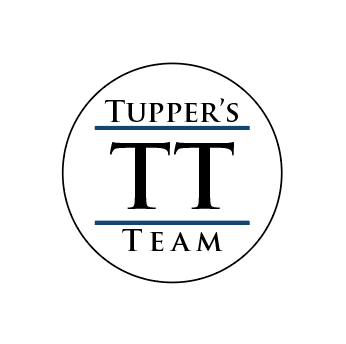When to Start Your 2026 Colorado Fire Mitigation to Maximize Upcoming Insurance Changes
Homeowners preparing their Colorado fire mitigation 2026 plan face an important deadline. Beginning July 2026, new insurance transparency laws will require companies to disclose wildfire risk models, include your mitigation efforts in rate calculations, and share your exact wildfire risk score under House Bill 1182. The changes follow a 57.9% rise in Colorado homeowners insurance premiums between 2018 and 2023, largely driven by wildfire and hail damage claims.
Homeowners who complete and document fire mitigation work now will be positioned to take full advantage of the new transparency and appeal options coming in July 2026. Properties with well-executed, professionally verified defensible space projects will have solid proof to support insurance appeals or discount requests, potentially saving thousands each year.
Key Takeaways
- Colorado’s House Bill 1182 gives homeowners full visibility into how insurers calculate wildfire risk, creating transparency for the first time.
- Insurers must now include property-specific mitigation work, like defensible space and fire-resistant upgrades, when setting premiums.
- Proper documentation of completed mitigation projects will be critical for earning discounts and successfully appealing wildfire risk scores.
- Homeowners who complete verified mitigation before spring 2026 will be best positioned to benefit when the law takes effect in July.
- Working with certified professionals ensures your mitigation efforts meet the standards insurers will require for recognition under the new law.
What Colorado’s 2026 Insurance Law Means for Mountain Homeowners
Colorado House Bill 1182, signed into law in May 2025, represents the most significant change to wildfire insurance regulation in decades. When it takes effect in 2026, insurers that use wildfire-risk models must:
- Publicly Disclose Their Risk Assessment Models: This transparency allows homeowners to understand exactly how insurers calculate wildfire risk and its impact on premiums.
- Include Your Mitigation Work in Pricing: Insurers must factor property-specific and community-level improvements into their pricing calculations, rewarding proactive homeowners.
- Provide Written Notice of Your Wildfire Risk Score: You’ll receive your exact risk score within 60 days of policy renewal, ending the guesswork about your property’s risk rating.
- Allow You to Appeal Your Risk Score: If you believe your score doesn’t accurately reflect your property’s actual risk, you can formally challenge the assessment.
- Post Information About Available Discounts: Insurers must clearly communicate mitigation-based discounts and incentives on their websites.
Why Starting Your Fire Mitigation Work Now Matters
The timing of your fire mitigation work directly impacts your ability to benefit from these new protections. Insurance companies will be required to consider mitigation efforts in their risk models, but only if that work is properly documented and verifiable.
Properties without documented mitigation work may face higher risk scores, while those with comprehensive, professionally completed defensible space projects will have concrete evidence to support appeals and discount requests.
Expert Insight: “We’re seeing more homeowners realize that fire mitigation isn’t just about immediate safety anymore. With the new insurance transparency requirements, proper documentation of your mitigation work becomes a financial asset that can directly impact your insurance costs for years to come.” – Ryan Reed, Owner of LAM Tree Service.
How Colorado’s Insurance Crisis Affects Your Timeline
These changes come as Colorado grapples with an insurance availability crisis. The state launched its FAIR Plan in April 2025 as an insurer of last resort for properties that private companies deem too risky to cover.
For perspective, a 2,288 square foot home in Evergreen with a market value of $850,000 would pay $4,361 annually for basic FAIR Plan fire coverage, plus an additional $1,151 for wind and hail protection. These high-cost, limited-coverage policies underscore why proactive mitigation and maintaining private insurance remains critical.
5 Steps to Prepare for Colorado Fire Mitigation 2026
The next year will be critical for Colorado homeowners preparing for the new 2026 insurance requirements. These five steps ensure your efforts are recognized when the new rules take effect.
1. Schedule a Professional Assessment
A Certified Arborist or wildfire-mitigation specialist can identify hazards that homeowners often miss, such as internal decay, hidden root issues, and ladder fuels that can carry flames into the canopy. Professional assessments also help establish a baseline for your mitigation documentation and ensure your project meets recognized standards for defensible space and vegetation management.
2. Create Defensible Space
Defensible space is the foundation of effective fire mitigation and a key factor that insurers will evaluate under the new law.
- Within 30 feet of structures: Remove dead or dying vegetation, trim low branches, and clear dry debris from decks, sheds, and propane tanks.
- From 30 to 100 feet: Thin dense tree groupings, remove ladder fuels, and create spacing between crowns to prevent crown fires.
- Beyond 100 feet: Maintain a transition zone that slows fire spread and protects nearby forested areas.
Even small actions, like switching to non-combustible mulch or pruning low limbs, demonstrate proactive risk reduction that can influence your wildfire score.
3. Document Everything
Under HB 1182, insurers must consider mitigation work only if it’s verifiable.
- Take before-and-after photos from multiple angles.
- Keep dated invoices, inspection reports, and permits for every phase of work.
- Create a simple property map marking cleared areas, retained trees, and mitigation zones.
- Store all documentation in a digital folder so it’s ready to submit during policy renewal or appeal.
Professional verification, such as an arborist’s report or fire-district inspection, adds credibility insurers can easily validate.
4. Maintain Your Defensible Space
Fire mitigation isn’t a one-time project. Ongoing pruning, debris removal, and vegetation management show insurers that your property remains low-risk. Plan for light maintenance each spring and fall, and schedule professional inspections every few years to address regrowth or structural changes in your trees.
5. Ask Your Insurer About Mitigation Credits
Beginning in 2026, insurance companies will be required to publish qualifying mitigation actions and available discounts on their websites. Contact your provider to confirm:
- Which improvements (like fire-resistant roofing, defensible space, or verified inspections) qualify for premium reductions.
- How to submit your documentation for review or appeal.
When to Start Your Colorado Fire Mitigation Work
Preparing your property is only half the battle – timing determines whether your fire mitigation work will count when Colorado’s 2026 law takes effect. To ensure your efforts are documented and recognized by insurers, plan your project now and aim to complete all major work before spring 2026. Starting early gives you time to secure contractors, handle permits, and gather the proof needed for future insurance discounts.
Late Fall (Nov–Dec 2025):
- Schedule professional evaluations and gather cost estimates.
- Apply for county permits early – many take 30 days or longer.
- Map your property and plan your defensible-space zones.
Winter (Jan–Mar 2026):
- Complete major tree work and debris removal while crews are available and fire restrictions are low.
- Remove dead or diseased trees, ladder fuels, and vegetation within 30 feet of structures.
- Take before-and-after photos and collect inspection records.
Spring (Apr–May 2026):
- Finish light vegetation management, replace cleared areas with fire-resistant ground cover, and verify documentation.
- Submit all records—photos, invoices, and inspection reports—to your insurer for inclusion in your wildfire-risk file.
Frequently Asked Questions About Colorado Fire Mitigation
What happens if insurance companies reject my mitigation documentation under the new law?
Under HB 1182, you have the right to appeal your wildfire risk score directly to your insurance company. The law requires insurers to provide a formal appeals process and consider additional documentation. Working with certified professionals like ISA Certified Arborists ensures your documentation meets professional standards. If appeals fail, you can file complaints with the Colorado Division of Insurance or consider the FAIR Plan as last resort coverage.
Can I use the Colorado tax credit for fire mitigation work completed in 2025-2026?
Yes, Colorado offers both tax subtraction and credit for wildfire mitigation work. For 2025, you can claim an income tax credit if your federal taxable income doesn’t exceed $126,300. You can also claim a tax subtraction for actual expenses regardless of income level. Keep detailed records of all expenses, contractor invoices, and inspection fees.
Will completing fire mitigation in 2025-2026 guarantee lower insurance rates?
While the new law requires insurers to incorporate mitigation efforts into risk models, it doesn’t guarantee specific premium reductions. Insurance rates depend on multiple factors, including regional claims and market conditions. However, proper mitigation provides the strongest position for rate negotiations and appeals under the new transparency requirements.
How do I choose between DIY fire mitigation and hiring professionals?
Safety should be your primary consideration. Tree removal, especially large trees near structures, requires specialized equipment and expertise. Professional work also provides certified documentation needed for insurance purposes. Consider hiring professionals for tree assessment, removal of trees over 6 inches diameter, work near power lines, and any work requiring permits.
Prepare for Colorado’s 2026 Fire Mitigation Law – LAM Tree Service Is Ready to Help
The window for optimal fire mitigation planning is narrowing as we approach winter of 2025. Properties that complete comprehensive, professionally documented mitigation work over the next six months will be positioned to immediately benefit from Colorado’s new insurance transparency requirements when they take effect.
When to Start Your 2026 Colorado Fire Mitigation to Maximize Upcoming Insurance Changes
Colorado fire mitigation rules are changing in 2026. Create defensible space, document mit...
Selling Your Home?
Get your home's value - our custom reports include accurate and up to date information.





